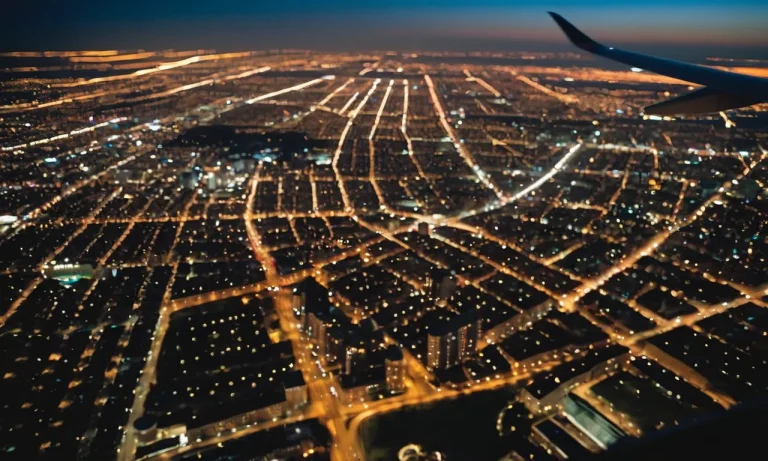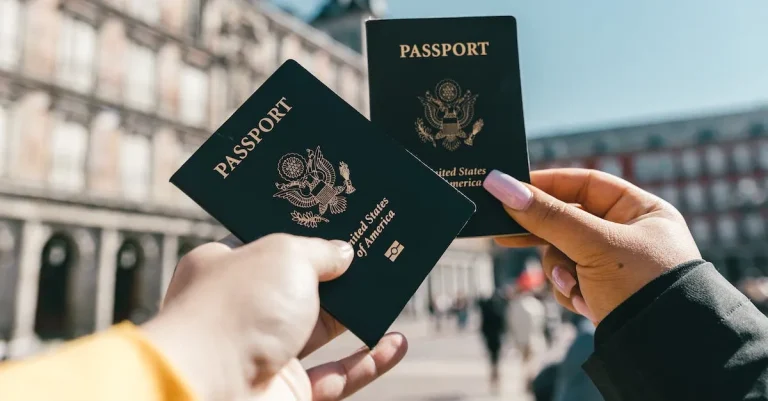With its glitz, glamor, and Hollywood magic, Los Angeles can seem like a paradise. But the City of Angels has more than its fair share of dangers and unsavory areas.
If you want to know which neighborhoods to avoid in LA, our guide has you covered.
This comprehensive article will provide an interactive map of LA’s most high-crime neighborhoods, along with data on crime rates, risks, and practical safety tips.
We’ll also overview factors that contribute to making certain areas riskier than others.
Finally, we’ll discuss initiatives seeking to improve LA’s rougher districts.
Overview of High-Crime Areas in Los Angeles
Los Angeles, known as the City of Angels, is a vibrant and diverse metropolis. However, like any major city, it has its fair share of neighborhoods with higher crime rates.
It is important for residents and visitors to be aware of these areas to ensure their safety and make informed decisions.
This article provides an overview of some of the high-crime areas in Los Angeles.
South LA
South LA has long been associated with higher crime rates. It is a large area encompassing neighborhoods such as Compton, Watts, and Inglewood.
While there are many wonderful communities in South LA, it is crucial to exercise caution in certain areas.
Property crimes, such as theft and burglary, are more prevalent here.
Additionally, gang-related activity can contribute to a higher level of violence.
However, it is important to note that crime rates have been decreasing in recent years due to community efforts and increased police presence.
East LA
East LA, located just east of downtown, is another area with higher crime rates. This predominantly Hispanic neighborhood has a rich cultural heritage but also faces challenges related to crime.
Property crimes, including car theft and break-ins, are more common in East LA.
Gang activity and drug-related crimes have also been reported in certain pockets of the area.
However, it is worth mentioning that East LA has seen positive changes in recent years, with community organizations working to improve safety and reduce crime rates.
Skid Row Area
The Skid Row area, located in downtown Los Angeles, is well-known for its significant homelessness issue and high crime rates.
This area is characterized by a large concentration of homeless individuals, many of whom struggle with substance abuse and mental health issues.
Efforts by the city and nonprofit organizations are ongoing to address the homelessness crisis and improve safety in the Skid Row area.
It is important to keep in mind that crime can happen anywhere, and these neighborhoods are not representative of the entire city of Los Angeles.
Many other neighborhoods in the city are safe and welcoming.
It is always recommended to stay vigilant and take necessary precautions regardless of the area you are in.
Interactive Map of LA’s Most Dangerous Neighborhoods
When it comes to exploring a city like Los Angeles, it’s important to have a clear understanding of which neighborhoods may pose safety concerns.
To assist residents and visitors alike, an interactive map of LA’s most dangerous neighborhoods has been created.
This map allows users to visualize crime data and make informed decisions about where to stay or visit.
Mapping Crime Data
The map is based on comprehensive crime data collected and analyzed by local law enforcement agencies. It takes into account various factors such as violent crimes, property crimes, and overall safety ratings.
By using this map, individuals can easily identify areas that may have higher crime rates and take necessary precautions.
Furthermore, the map provides real-time updates, allowing users to stay informed about any recent incidents and make adjustments to their plans accordingly.
Whether you’re a tourist planning a trip or a resident looking to explore new areas, this interactive map can be a valuable resource.
Most Dangerous Neighborhoods
While it’s essential to remember that crime can happen anywhere, there are certain neighborhoods in Los Angeles that have a higher incidence of criminal activity.
Some of the most notorious neighborhoods include:
- South Central LA: Known for its high rates of gang-related violence, South Central LA has been historically associated with crime.
- Compton: This neighborhood has often been in the spotlight due to its reputation for gang activity and violence.
- Skid Row: Located in downtown LA, Skid Row faces significant challenges related to homelessness, drug addiction, and crime.
It’s important to note that while these neighborhoods may have higher crime rates, they also have vibrant communities and cultural landmarks worth exploring.
By being aware of the potential risks and taking necessary precautions, visitors can still enjoy all that Los Angeles has to offer.
What Makes These Areas High-Risk?
Los Angeles, like any major city, has its fair share of high-risk neighborhoods. These areas can be characterized by several factors that contribute to their reputation for being dangerous and unsafe.
Understanding what makes these neighborhoods high-risk is essential for residents, visitors, and authorities to address the issues effectively.
Poverty
One of the primary factors that contribute to the high-risk status of these neighborhoods is poverty.
Poverty is often associated with a lack of resources, limited access to quality education, and limited employment opportunities.
These conditions can create a cycle of disadvantage, leading to higher crime rates and a higher risk of violence.
Gang Violence
Gang violence is another significant factor that contributes to the high-risk nature of these neighborhoods.
Gangs often operate in impoverished areas where residents may feel marginalized and have limited opportunities.
Gang-related activities, such as drug trafficking and territorial disputes, can lead to increased violence and crime rates.
The Los Angeles Police Department has been actively working to combat gang violence through various initiatives and community outreach programs.
Underfunded Services
Underfunded services in these neighborhoods also contribute to their high-risk status.
Limited access to quality healthcare, education, and recreational facilities can further perpetuate cycles of poverty and crime.
When essential services are lacking, residents may feel neglected and turn to illegal activities as a means of survival.
Efforts to improve and invest in these services are crucial to breaking the cycle of disadvantage in these areas.

Tips for Staying Safe
Situational Awareness
When visiting or living in Los Angeles’ worst neighborhoods, it is crucial to be aware of your surroundings at all times.
Pay attention to the people around you, the behavior of those nearby, and any potential signs of danger.
This can include individuals who seem to be watching or following you, suspicious activities, or areas with a high crime rate.
By remaining vigilant and alert, you can significantly reduce the risk of becoming a target.
Avoiding Risky Activities
To further ensure your safety in these neighborhoods, it is advisable to avoid engaging in risky activities.
This includes flashing expensive belongings, such as jewelry or electronic devices, as it may attract unwanted attention.
It is also wise to refrain from using headphones or being engrossed in your phone while walking, as this can make you an easy target for thieves.
Additionally, try to avoid walking alone at night and opt for well-lit and populated areas whenever possible.
Self-Defense Preparedness
While situational awareness and avoiding risky activities are crucial, it is always a good idea to be prepared for self-defense.
Consider taking self-defense classes to learn basic techniques and strategies that can help you protect yourself if the need arises.
Additionally, it is recommended to carry a personal safety device, such as pepper spray or a whistle, as a deterrent and a means of calling for help in case of an emergency.
Remember, the goal is to stay safe and prevent any potential harm.
Efforts to Improve High-Crime Areas
Los Angeles has long been known for its diverse neighborhoods, each with its unique character and charm.
Unfortunately, some neighborhoods have struggled with high crime rates, posing challenges for residents and local authorities.
However, there have been several commendable efforts to improve these high-crime areas and make them safer for everyone.
Community Initiatives
One of the most effective ways to tackle crime in high-crime areas is through community initiatives.
These initiatives involve engaging residents and empowering them to take an active role in their neighborhoods’ safety.
Neighborhood watch programs, for example, encourage residents to be vigilant and report suspicious activities to the police.
Community clean-up events not only contribute to improving the physical appearance of the area but also foster a sense of pride and ownership among residents.
Furthermore, community centers and organizations play a crucial role in providing resources and support to residents in high-crime areas.
They offer educational programs, job training, and recreational activities for youth, aiming to steer them away from criminal activities and towards positive opportunities.
Increased Funding
Another key aspect of improving high-crime areas is increased funding.
Local government authorities have recognized the urgency of addressing crime and have allocated additional resources to these neighborhoods.
This funding helps to bolster law enforcement efforts, including the hiring of more police officers, the implementation of advanced crime prevention technologies, and the establishment of specialized units to combat organized crime and gang activity.
Moreover, increased funding allows for the improvement of infrastructure and public spaces in these neighborhoods.
Enhancing street lighting, renovating parks, and creating safe recreational areas can contribute to a more secure and inviting environment for residents.
Police Relations
Building positive relationships between law enforcement agencies and the communities they serve is essential for effective crime reduction.
Police officers have been actively working towards improving these relationships through community policing initiatives.
This involves officers regularly interacting with residents, attending community meetings, and collaborating with community leaders to address specific concerns and develop targeted strategies.
Furthermore, transparency and accountability are crucial in building trust between law enforcement and the community.
Police departments have implemented measures such as body-worn cameras and independent oversight boards to ensure that officers’ actions are held to the highest standards and that any misconduct is promptly addressed.
By fostering a sense of partnership and mutual respect between police and residents, high-crime areas can experience a significant reduction in crime rates and an improvement in overall safety.
All in all, the efforts to improve high-crime areas in Los Angeles are multifaceted, involving community initiatives, increased funding, and improved police relations.
Through these combined efforts, neighborhoods that were once plagued by crime can begin to thrive and provide a safe and secure environment for their residents.
Conclusion
While LA conjures up glamorous images, parts of the city remain plagued by high crime rates.
Our guide outlined the city’s most dangerous neighborhoods and provides useful safety tips and information to help avoid risky areas.






